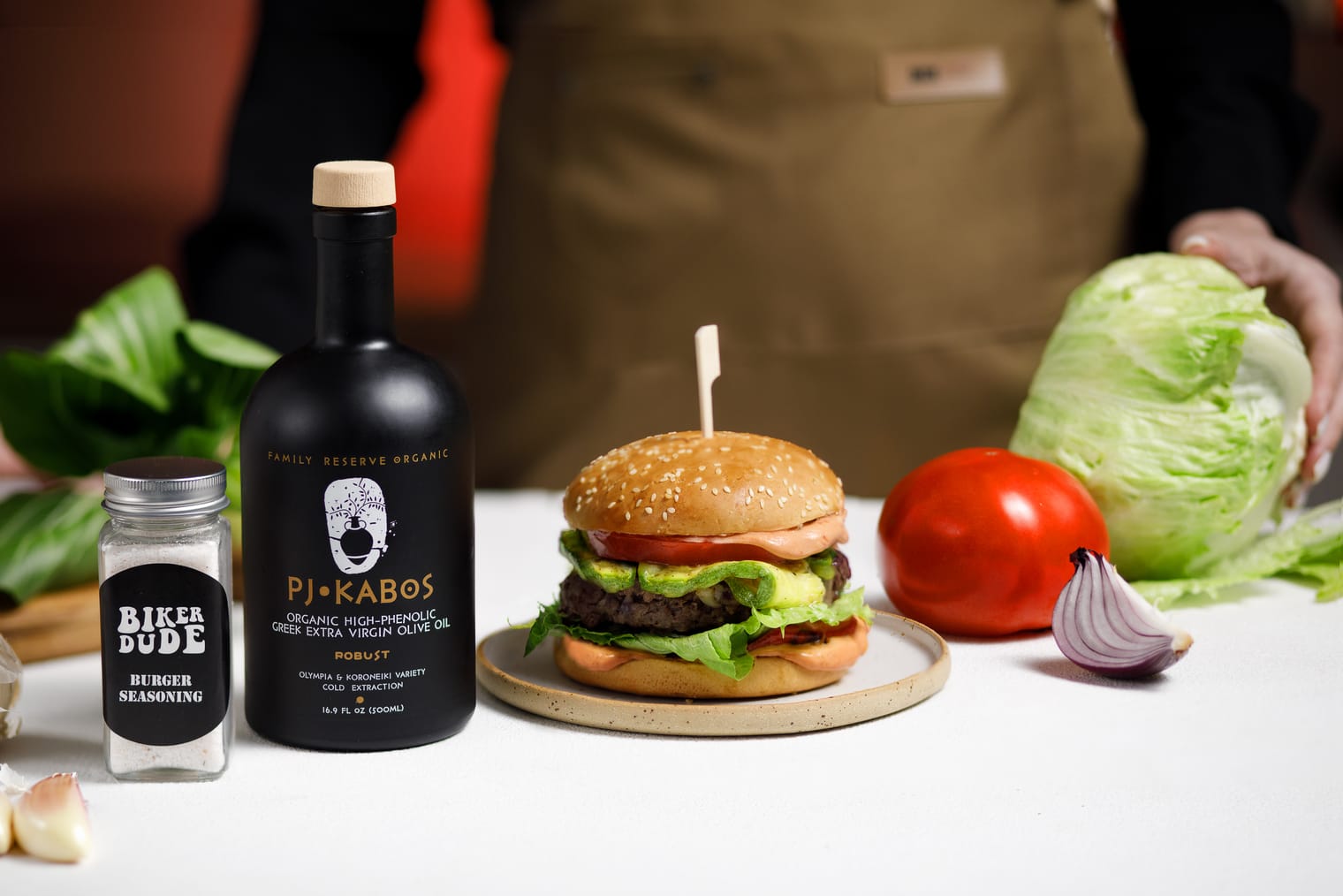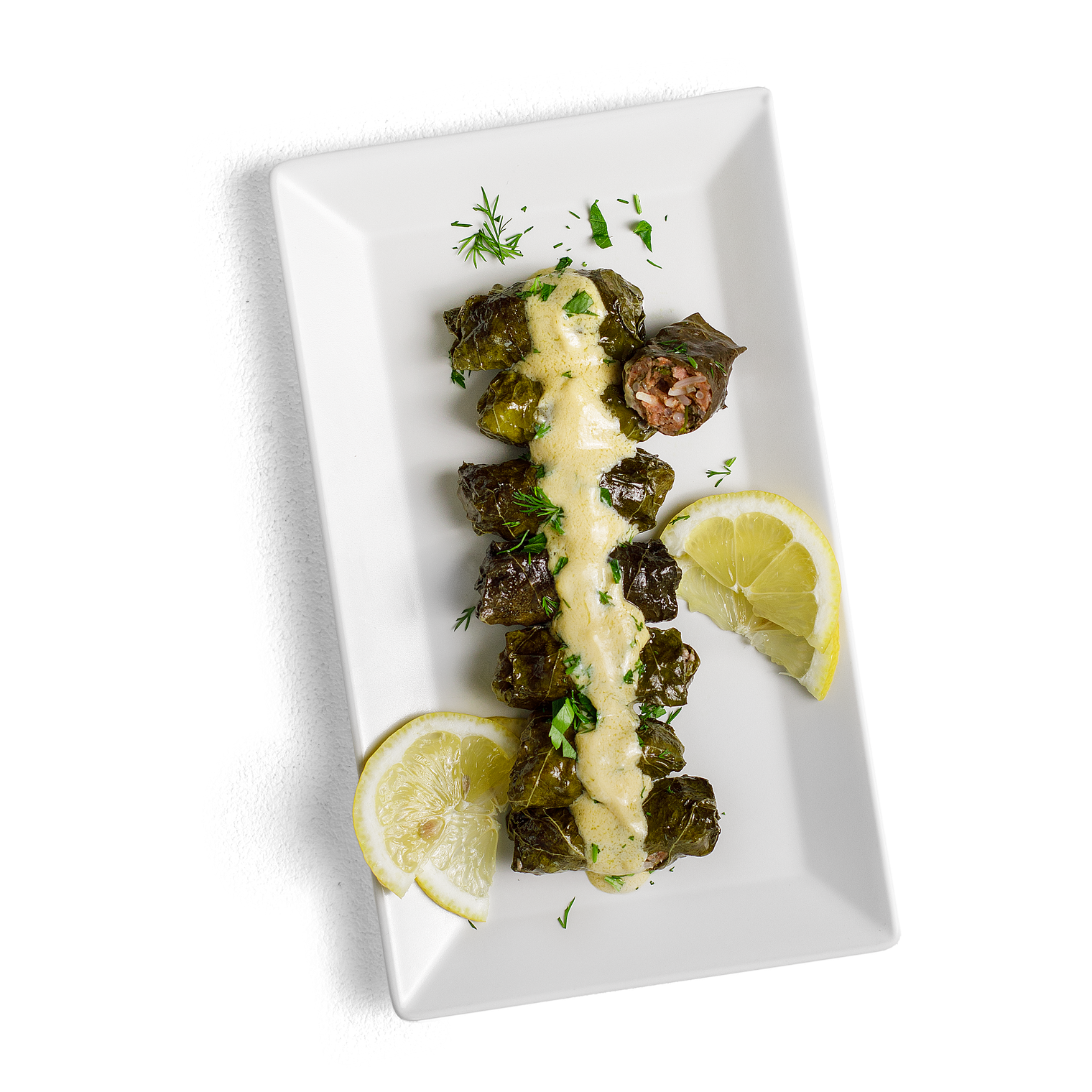Legume—appetizer or main dish
Serves: 8
PJ KABOS High-Phenolic Extra Virgin Olive Oil used:
- For cooking: Family Reserve – Medium (White Tin)
- For finishing: Family Reserve Organic – Phenolic Shot (Gold Bottle)
Fava and Hummus: A short explanation
In the unfolding tales of Mediterranean cuisine, Fava and Hummus often find themselves in the culinary limelight, engaging in a dance of flavors that's both familiar and distinct. Peel back the layers, and you'll discover a divergence rooted in unique plants and textural nuances.
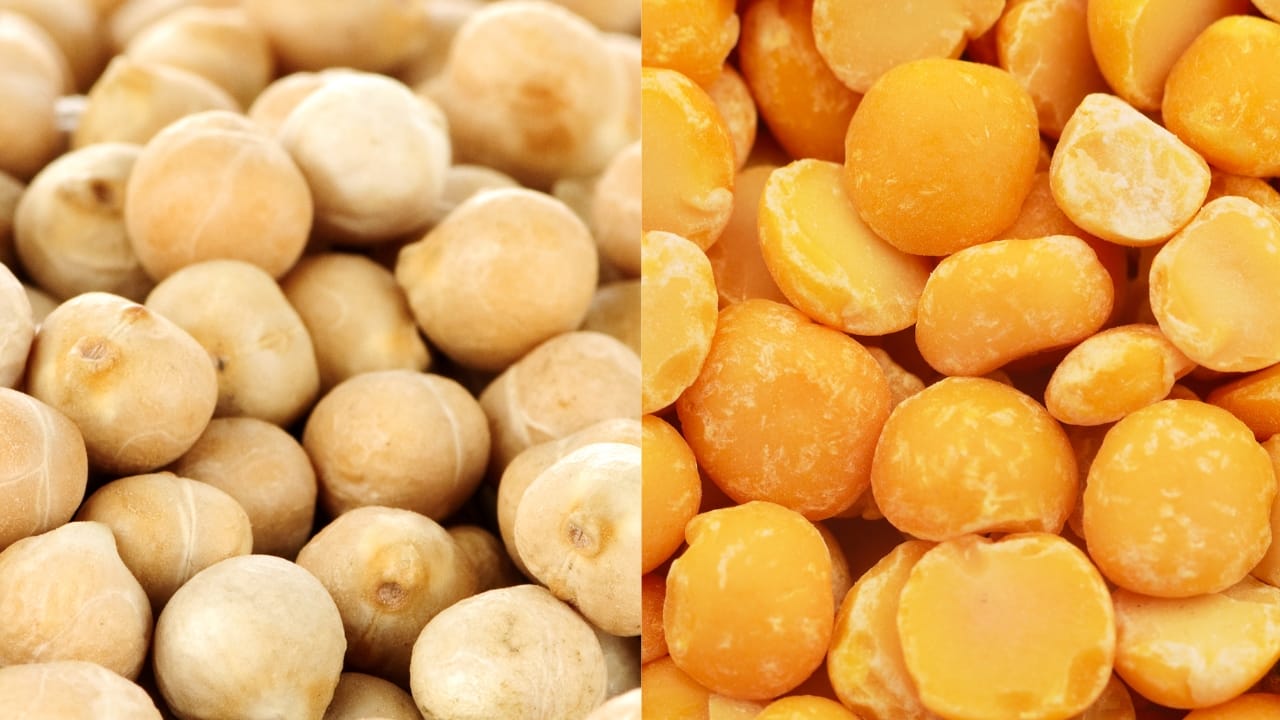
Yellow split peas versus chickpeas
Fava
Enter Fava, the understated virtuoso, composed most commonly of yellow split peas (Scientific name: Pisum sativum) or the PDO—Protected Designation of Origin—Santorini fava bean (Scientific name: Lathyrus clymenum).
Picture this: a dish that blurs lines, as yellow split peas gracefully capitulate to heat, resulting in a luscious creaminess tailor-made for soups, stews, and the enigmatic yellow split pea puree that is paradoxically dub "fava." Worth noting, aside from the Santorini variety, actual fava beans are typically referred to as broad beans (Scientific name: Vicia faba), having no role in either of these dishes.
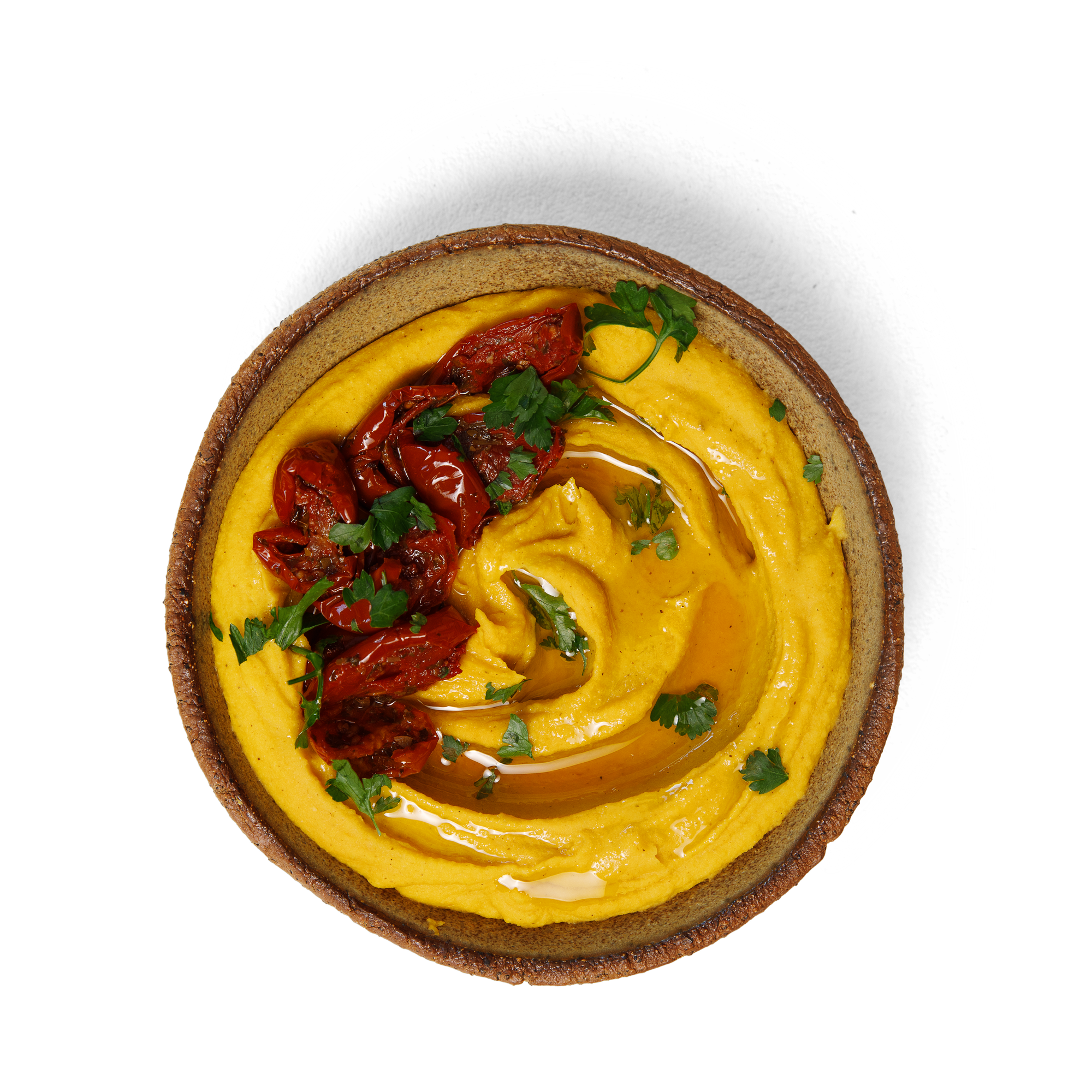
Hummus
Now, onto Hummus. Its narrative unfolds with chickpeas (Scientific name: Cicer arietinum), or garbanzo beans in the Spanish-speaking world. These round and robust legumes, with their unyielding texture, carve a niche in salads, curries, stews, and the beloved snack, roasted chickpeas.
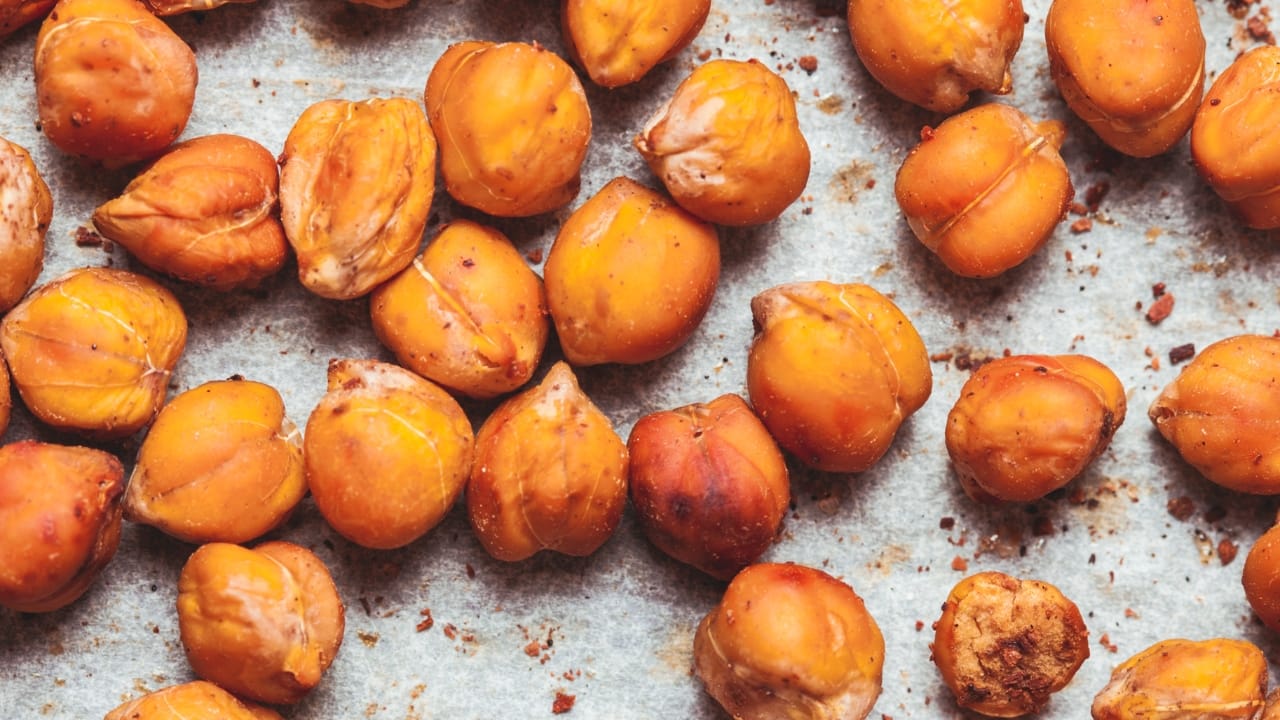
PJ KABOS: A family-owned olive oil company that you can trust.
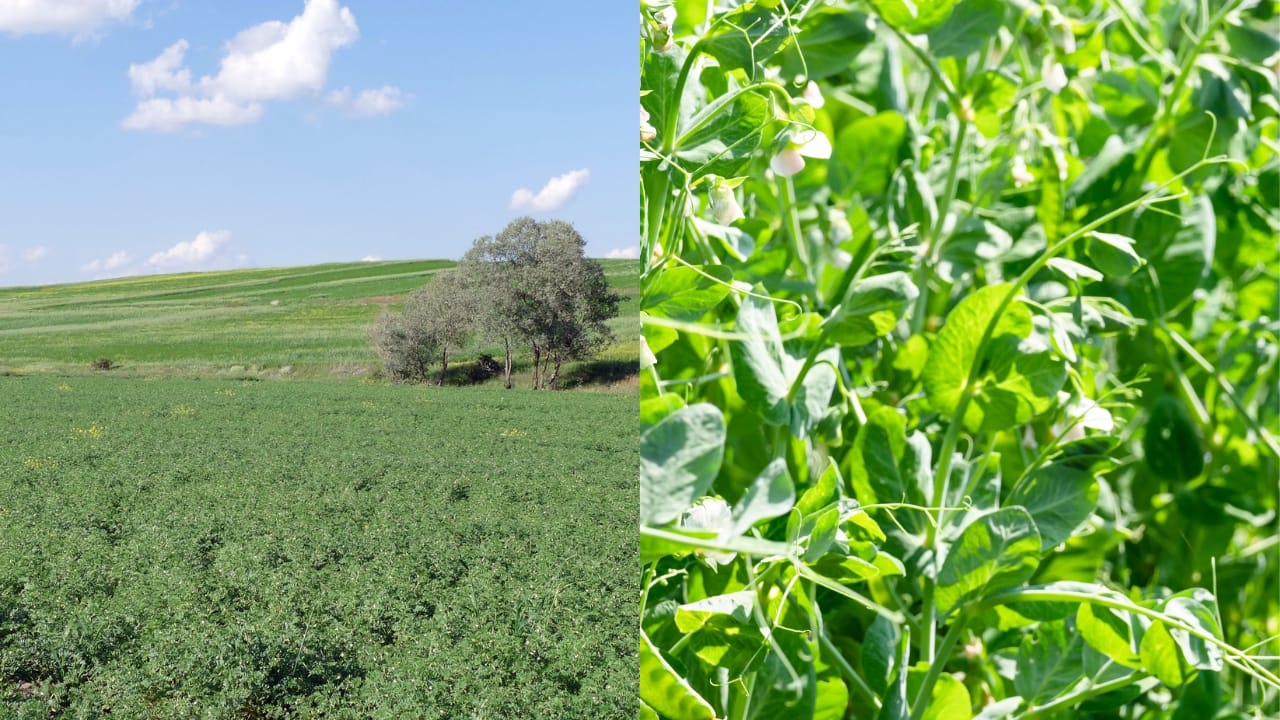
Beyond the distinct taste and plant species, it's the texture that sets these two dishes apart. As mentioned, yellow split peas gracefully disintegrate under the flame, lending themselves to cozy soups or dips, while chickpeas stand resilient, requiring a blender or traditional mortar and pestle for the beloved dip, Hummus. Chickpea firmness, however, offers a versatile canvas for culinary creations, especially in salads adorned with olive oil.
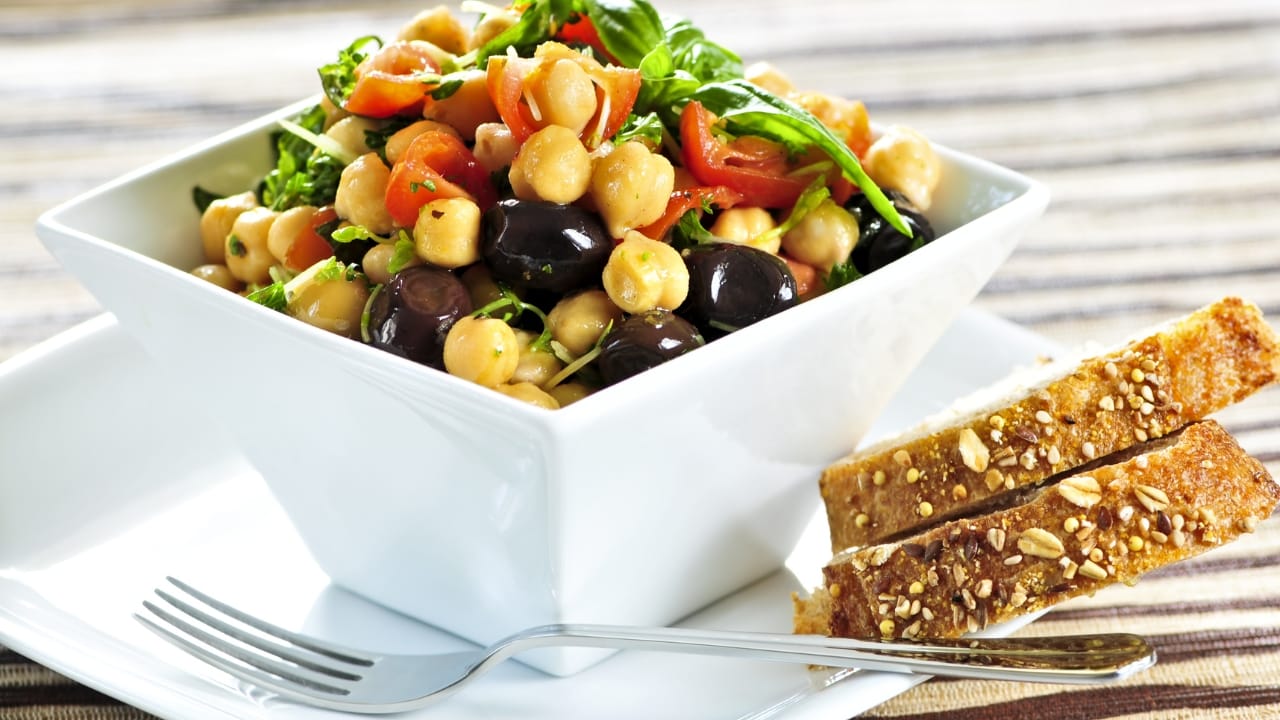
On today's menu
Crafted from the nutritional bounty of readily available dry yellow split peas found in the legume section of markets worldwide, today's dish, Fava, also invites you to relish the robust and tasteful goodness of PJ KABOS Phenolic Shot Extra Virgin Olive Oil.

Fava is a dish that is unpretentious, uncomplicated, profound, and rooted in the sun-drenched essence of the region. It's a dish for friends and family to gather around and eat while enjoying one another's company.

We hope you enjoy this video and the recipe and the process of creating Fava, whether as an appetizer or a main meal for your loved ones and friends. Any suggestions are welcomed as we continue to explore together and savor the richness of Mediterranean flavors while using high phenolic extra virgin olive oil.
PJ Kabos Olive Oil Recipe with Video: Cooking with High-Phenolic Olive Oil—Split Peas Dip—Fava
Ingredients
- 1 large onions, sweet, sliced
- 1 carrot, medium
- 2 cloves of garlic, or to taste
- 2 stalks of celery, chopped
- 2 dry bay leaves
- ¼ teaspoon oregano, dry
- 1½ teaspoon sea salt, or to taste
- ½ teaspoon pepper, or to taste
- 3 lemons, juice for mixing in the dip, garnish
- ½ cup PJ KABOS High-Phenolic Extra Virgin Olive Oil Family Reserve Medium (White Tin)
- PJ KABOS High-Phenolic Extra Virgin Olive Oil Family Reserve - Phenolic Shot (Gold Bottle), drizzle
- oregano, fresh for finishing (optional)
- pepper, freshly ground for finishing (optional)
- capers, for finishing (optional)
- sun-dried tomatoes for serving (optional)
- olives, for finishing (optional)
- lemon, sliced, to garnish (optional)
Preparation
Prior to cooking: To partially reconstitute, rinse and soak the split peas for several hours, changing the water 2 or 3 times. If you soak for more than 3 hours, or overnight, be sure to refrigerate.
For the vegetables: In a large pot add ¼ cup PJ KABOS High Phenolic, Family Reserve Medium (White Tin). Add the onion, carrot, celery and garlic, dry oregano; sauté. Set aside in a bowl.
Cooking the split peas: To the same large pot in which the vegetables were sautéed, add the split peas and fill the pot to about an inch from the rim. Place the large pot on a medium sized burner (Tip: this trick will help to keep the beans from overflowing). Boil on high. Skim and discard any foam that might form, then to the boiling pot, add the vegetables along with the olive oil in which they were sautéed. Add the bay leaves. Lightly cover and cook on high (or medium high) until the peas are tender; you may need to add additional boiling water. After the peas are tender, add the salt and pepper. Reduce until almost all the water is gone.
To make into dip: Remove the bay leaves. Cool the peas to an edible temperature. Add the juice of 1 lemon. Using a blender, puree the mixture to the desired consistency using the remaining ¼ cup of oil and the juice from the 2nd lemon added slowly as you blend. (Tip: to create a dip that suits your personal taste, additional salt, pepper, lemon, garlic powder and olive oil may be added as you test the dip.) Arrange the dip on a platter or in a bowl. (Tip: the dip gets thicker as it sits). Sprinkle lightly with fresh oregano. Garnish with capers, sundried tomatoes, or olives and arrange lemon slices around the dip.
For the pièce de résistance: A gentle drizzle of Family Reserve Organic Extra Virgin Olive Oil – Phenolic Shot (Gold Bottle) is key. With an impressive phenolic content, it boasts a rich, robust flavor. Use it as a finishing touch, but remember, moderation is key to savor its healthy goodness.
Serving suggestion: Serve with pita bread, olives and feta. This makes a complete meal for many or it can be an appetizer.
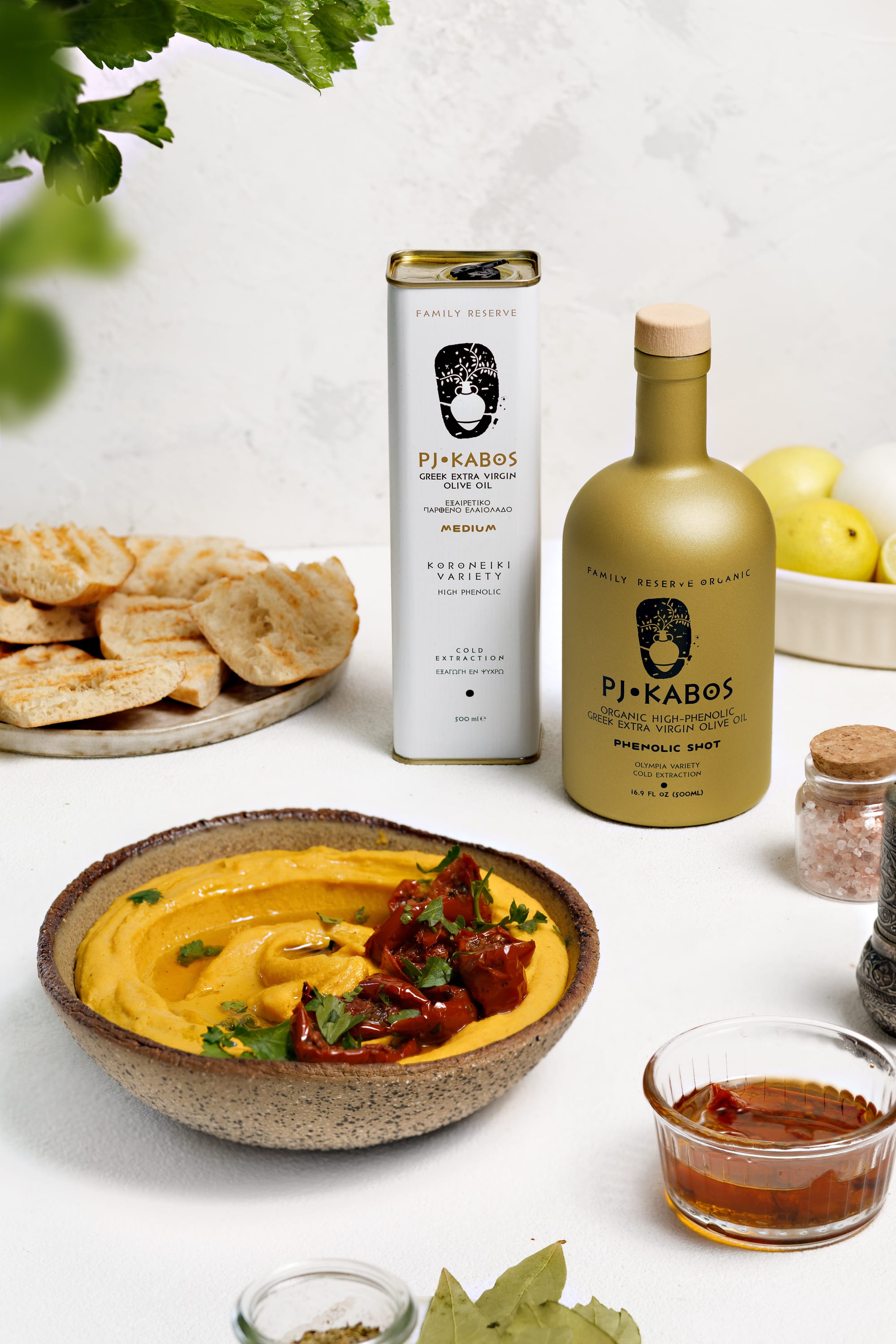
PJ KABOS: Elevate Your Health with High-Phenolic Extra Virgin Olive Oil. "For those who want to be good to their bodies."

Kali Orexi—Happy Eating!
Please enjoy having a look around our websites, pjkabos.com and oliveoil.com, as well as our Amazon Store for more about our many high-phenolic olive oils, recipes, etc. And follow along with us on Instagram for pretty photos concerning olive oil production, our groves in Greece, family history and more.



